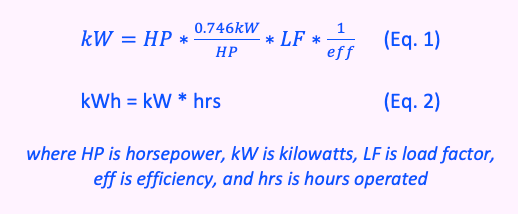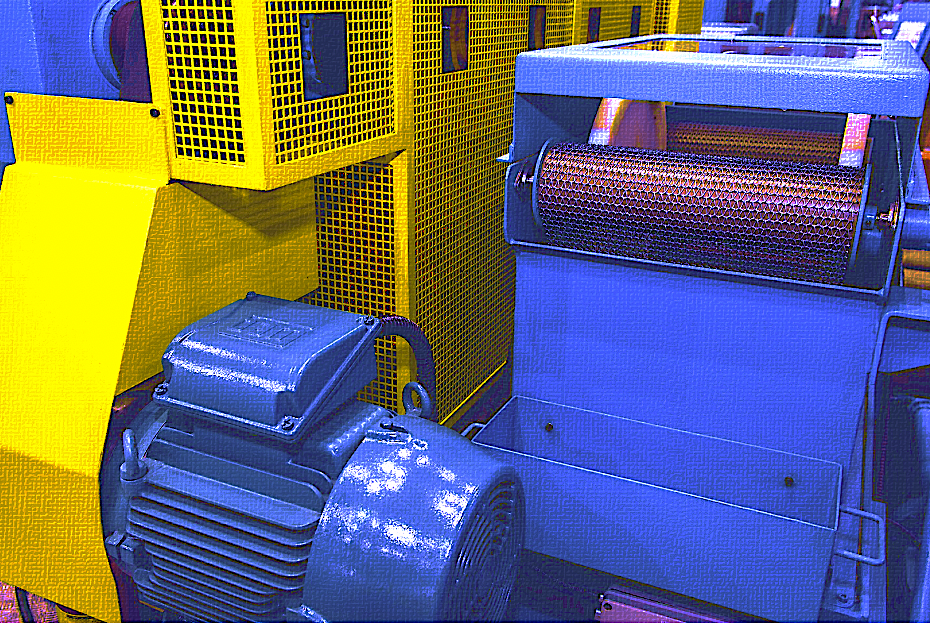One of the more interesting issues with which we’ve been wrestling since the early 1990s is how to evaluate the efficiency of an electric motor in the field. Sounds simple, but even now, the discussion continues among academia, manufacturers, end-users, independent engineers, international energy programs, and others.
During discussions related to the renewal and re-issue of standards such as IEEE 112-2017, “Test Procedure for Polyphase Induction Motors and Generators,” opinions varied widely, based on consensus over the years (with a heavy slant by motor manufacturers). IEEE 112 Method B is one reference that’s cited by the U.S. Federal government for calculating efficiency and developing energy policy related to electric motors. Another cited reference is NEMA MG-1 (the National Electrical Manufacturers Association Motors and Generators standard) for nominal and minimum efficiency.
The methods for laboratory testing of motor efficiency are complex and require exact measurements at specific load points to develop a curve that allows motor manufacturers (OEMs) to determine a nominal (average) efficiency. Most OEMs will use software to estimate efficiency in the design and modeling stages of an electric machine.
Why is electric-motor efficiency so important? This really is simple: A motor’s efficiency is determined by the energy supplied to the motor in kilowatts (kW) to the output torque at the shaft, which is converted to kW. The difference is the energy lost in core losses, winding losses, friction and windage losses, rotor losses, air-gap losses, and smaller parasitic losses due to generated heat, vibration, and noise. This situation has a direct relation to the cost to operate the electric motor, its reliability, and the motor-user’s impact on greenhouse-gas emissions (GHG). Once you know a motor’s efficiency, you can estimate your operating demand and usage as shown in Equations 1 and 2 (below). In fact, you can also reasonably assess the reliability of your electric machines and even the effectiveness of your motor repairs.

For example, if I have a 100-hp motor operating at 75% load factor for 6000 hours, and I know the unit is 94.5% efficient, I also know it is using (100 * 0.746kW/HP * 0.75 * (1/0.945) =) ~59.2 kW and 355,200 kWh. This, of course, is approximate, since I don’t know the efficiency at 75% load unless I have access to the motor literature; use the estimated curves from the U.S. Department of Energy (USDOE, energy.gov); or have actually measured everything. But I can estimate. Above 50% motor load, using the full-load nameplate efficiency is a reasonable estimation, as it is already up to 1% to 2% of the actual motor efficiency. Granted, this is assuming that some type of damage has occurred, or a poor-quality repair has been performed. Otherwise, the efficiency would be the same or better. The result, if we have energy costs of $10/kW demand and $0.10 usage, and use 0.707 Tons CO2/MWh (2020 national average – https://eia.gov) would be what’s shown in Equations. 3, 4, and 5, resulting in: $7,104 demand, $35,520 usage, and 251 Tons CO2/yr.

Now, if we have a poor-quality repair that has an impact of 1% efficiency, then the numbers change to this: ~60kW, 360,000 kWh, $7,200 demand, $36,000 usage, and 255 Tons CO2. This reflects an increase in operating costs of $576/year and 4 Tons of CO2/year. While such numbers don’t seem excessive, when extended across a plant, they add up quickly.
When attempting to determine the efficiency of a plant’s electric-motor assets, removing a unit and performing IEEE 112 method B testing, CSA 390 (Canadian) testing, or IEC 60034-2-1 testing, is neither affordable nor feasible. Starting in the 1990s, organizations, including the USDOE’s Motor Challenge program, worked on a variety of methods for field efficiency testing. These methods ranged from wattage tests to voltage and current, to ORMEL96 (Oak Ridge Motor Efficiency and Load 96), as well as commercially dedicated field-testing devices. Of particular interest, as we continue this discussion, will be the ORMEL96 methodology that traces back to the study, “Assessment of Methods for Estimating Motor Efficiency and Load Under Field Conditions,” (ORNL, January 1996). Results from this method were found to be very close to the those from the IEEE 112 Method B. (Note: Many of the existing commercial ESA devices have some traceability back to the ORMEL96 method.)
Fortunately, even without a commercial device, there are methods for evaluation of field efficiency using watt meters or voltmeters and clamp-on current meters, among others. The further you deviate from the torsional and standards methods, however, the more that accuracy will be affected. And, if you drop below 50% load, errors increase. These types of methods are discussed in the USDOE document, “Determining Electric Motor Load and Efficiency,” Determining Electric Motor Load and Efficiency (energy.gov), and the USDOE “Premium Efficiency Motor Selection and Application Guide,“ Premium Efficiency Motor Selection And Application Guide: A Guidebook for Industry (energy.gov). (Note: During this article series, we will cover several examples of these approaches and reference both guides.)
THE PAYBACK
The ability to separate out certain aspects of the impact of electric-motor efficiency can be used to: 1) qualify electric machinery repair; 2) assist in repair-versus-replace decisions; 3) verify and commission new equipment; and 4) during a unit’s operating life, perform Time To Failure Estimation (TTFE). Aspects of efficiency tests can be used in trending and machine learning (ML) as part of a physical-asset-management program, as well in troubleshooting efforts. Additionally, based on their validity and pedigrees, ESA methodologies have already been used successfully in machinery-repair-related civil and insurance court cases.
In Part II of this series, we’ll discuss the comparison of Electrical Signature Analysis ORMEL96 methods and IEEE 112 Method B on a series of motors. This comparison used EMPATH ESA software, MotorMaster plus (obsoleted by USDOE); and IEEE 112 Method B, all of which resulted in efficiencies within 1% at full load. The discussed comparisons used the same test points on a dynamometer at 25%, 50%, 75%, 100%, and 125% load.TRR
ABOUT THE AUTHOR
Howard Penrose, Ph.D., CMRP, is Founder and President of Motor Doc LLC, Lombard, IL and, among other things, a Past Chair of the Society for Maintenance and Reliability Professionals, Atlanta (smrp.org). Email him at howard@motordoc.com, or info@motordoc.com, and/or visit motordoc.com.
Tags: reliability, availability, maintenance, RAM, energy efficiency, electric motors, Electrical Signature Analysis, ESA, watt meters, voltmeters, clamp-on current meters, U.S. Department of Energy, USDOE, energy.gov, IEEE 112-2017, NEMA MG-1



